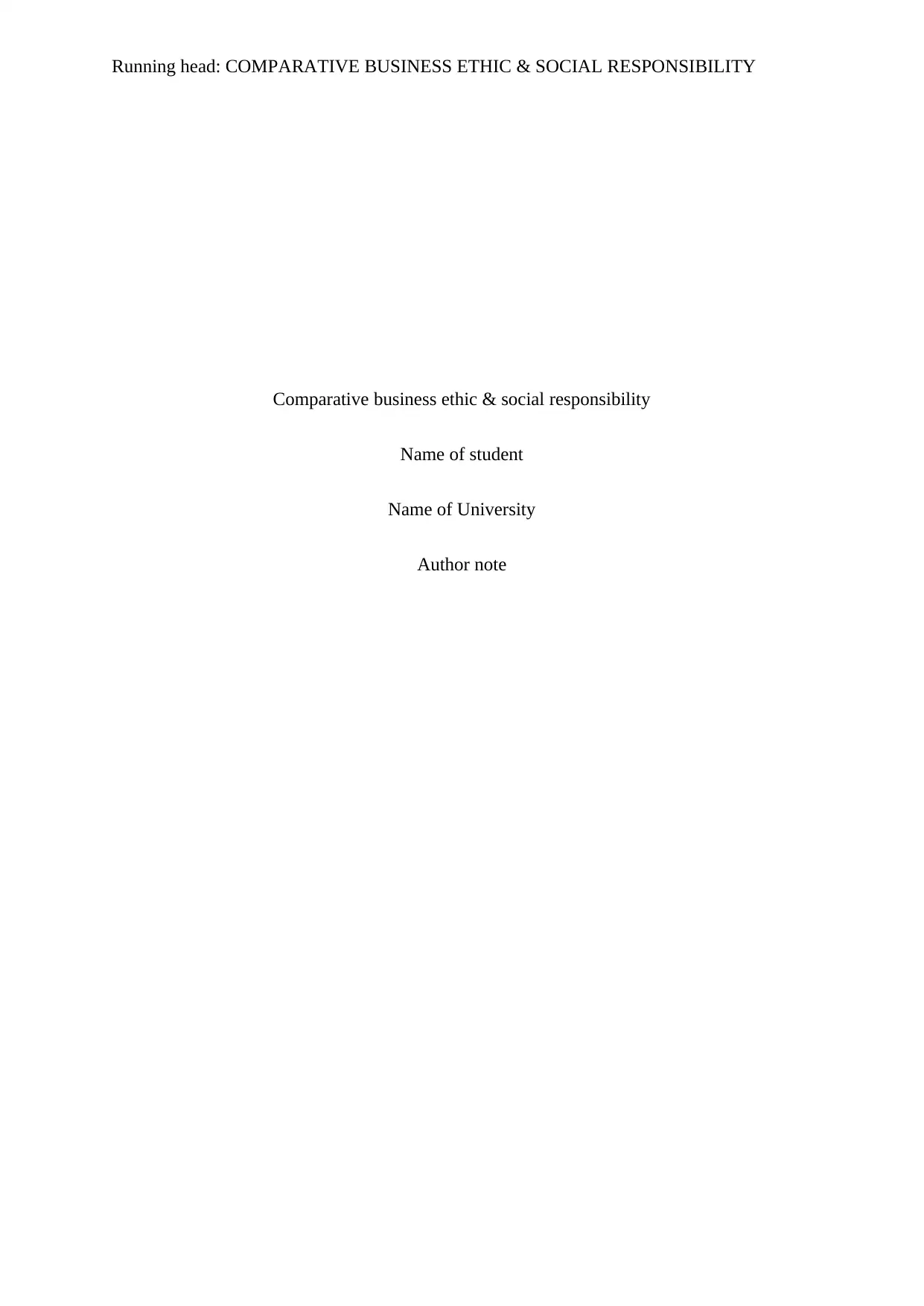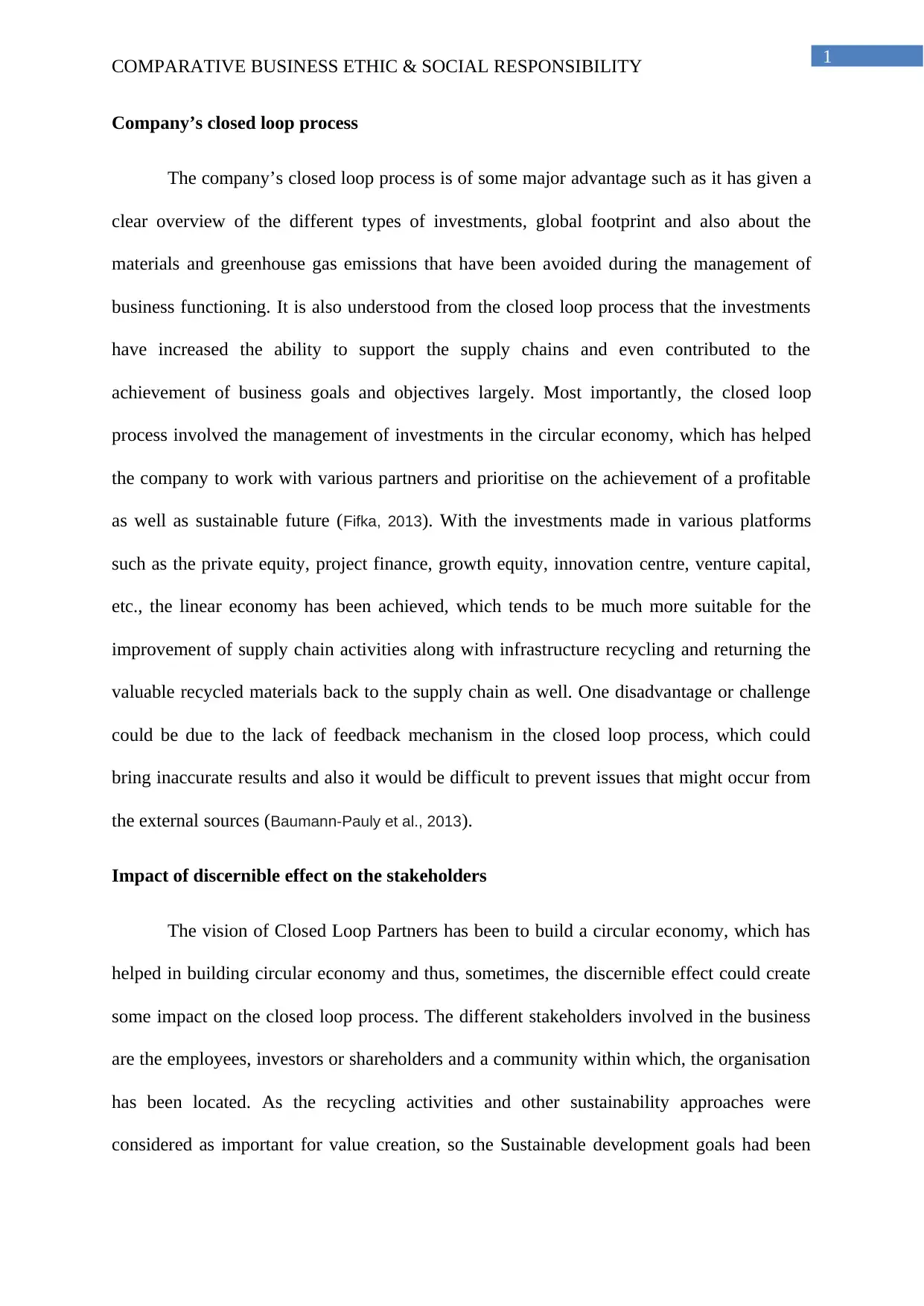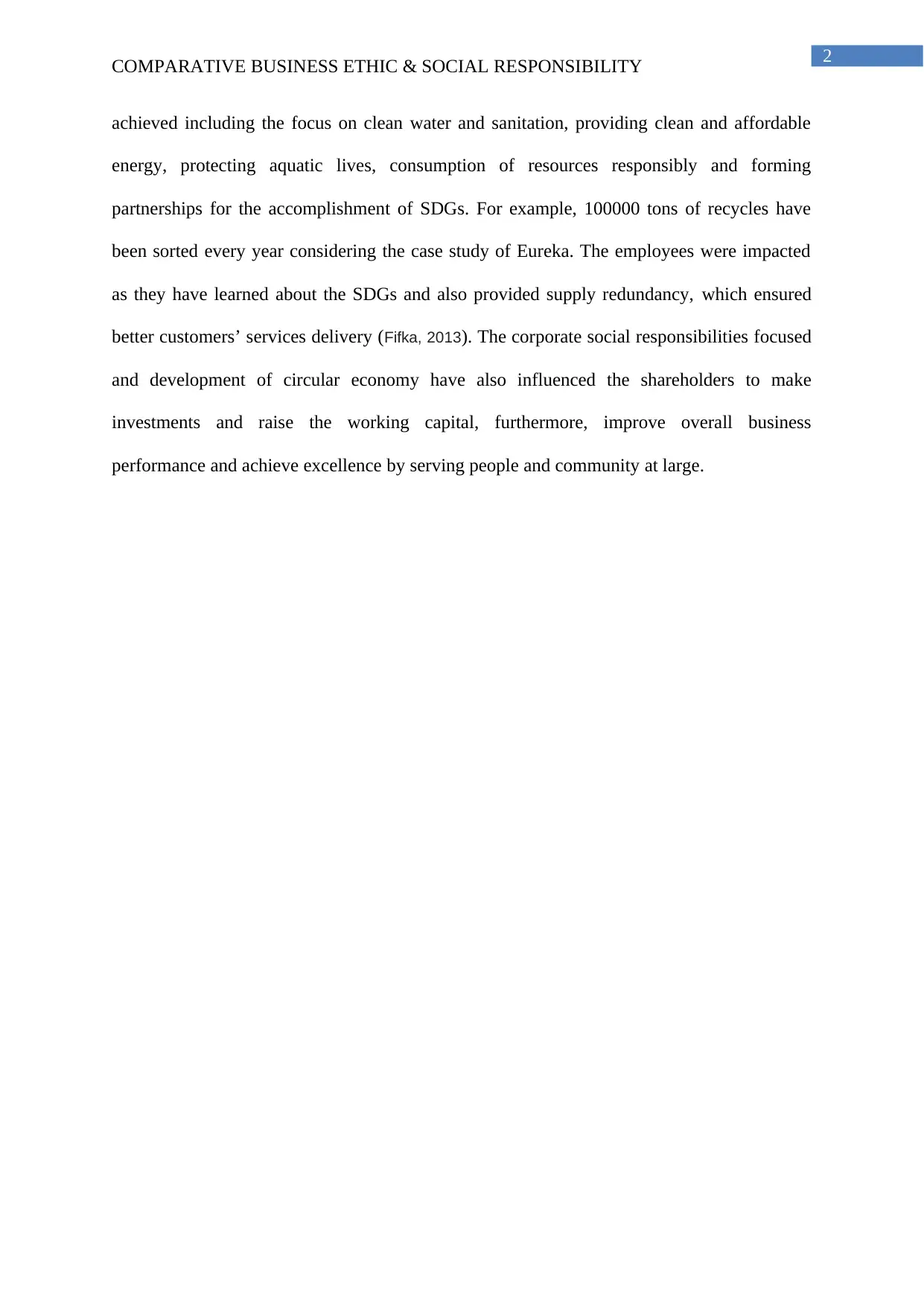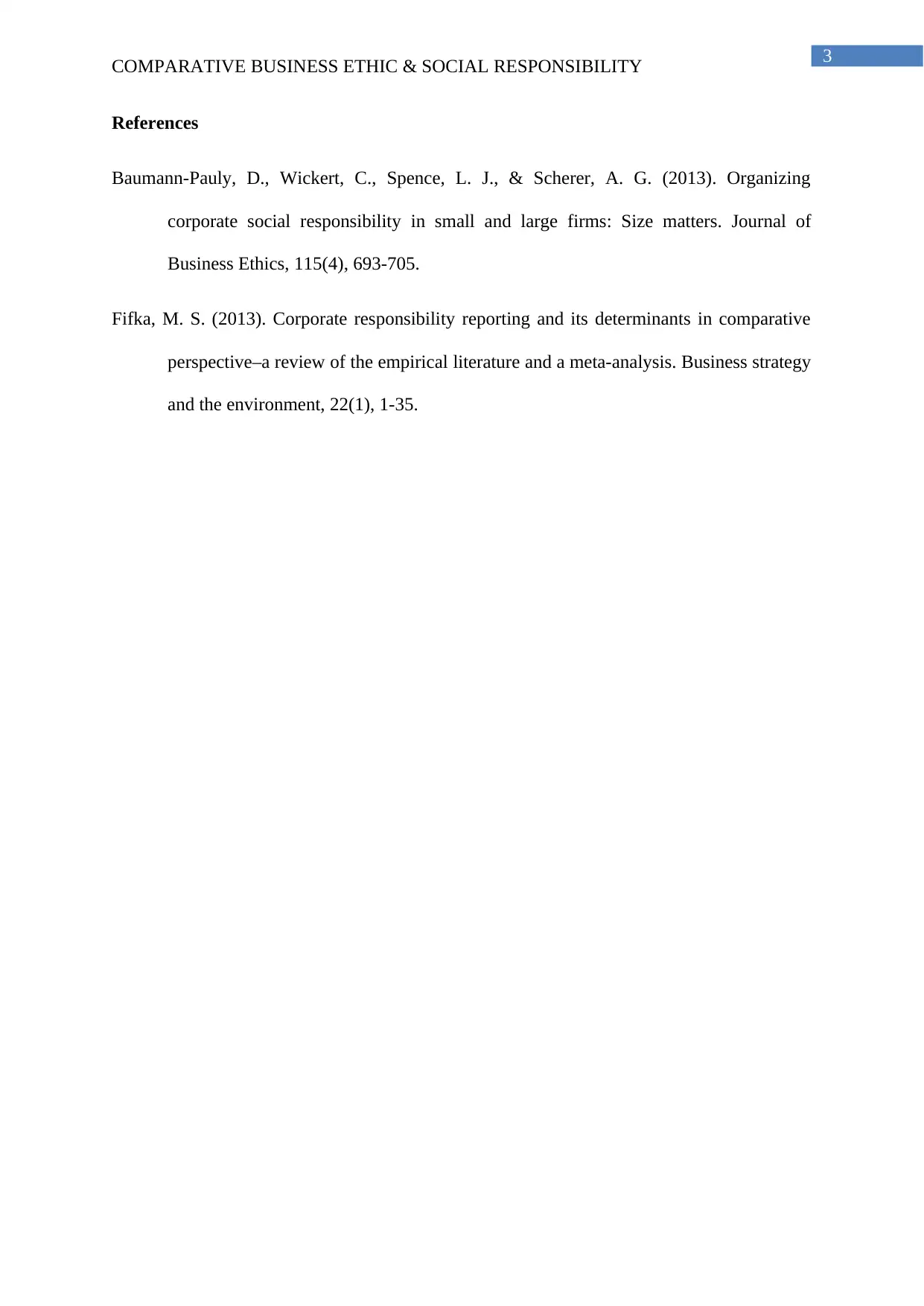Comparative Business Ethic & Social Responsibility Report, University
VerifiedAdded on 2022/08/11
|4
|585
|20
Report
AI Summary
This report analyzes a company's closed-loop process, highlighting its advantages, such as providing a clear overview of investments, global footprint, and material/greenhouse gas emission reductions. The process supports supply chains and business objectives, with investments in the circular economy. A potential disadvantage is the lack of a feedback mechanism, which could lead to inaccurate results and difficulty preventing external issues. The closed-loop process aims to build a circular economy, impacting stakeholders like employees (through SDG awareness and supply redundancy), investors (by encouraging investments and improving performance), and the community (through sustainable practices). The report references Closed Loop Partners and their 2019 Impact Report, and the impact on stakeholders, specifically the company's commitment to the Sustainable Development Goals (SDGs) and how it benefits the stakeholders. The company's actions have ensured better customer service delivery and also improved overall business performance and achieve excellence by serving people and community at large.
1 out of 4











![[object Object]](/_next/static/media/star-bottom.7253800d.svg)